Current Western Australia Tide Levels
The tide levels (the blue line) presented in these images are near real time actual levels recorded up to one hour ago. The green line represents the tide prediction for each site, while the red line is the tidal residual.
The tide times presented on this page are from the Western Australian Department of Transport. For more information please visit the DoT website
Port Hedland tide levels now
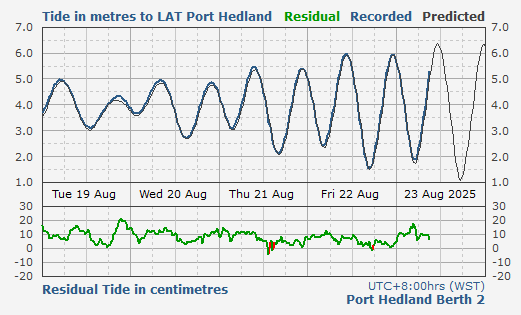
Onslow tide levels now
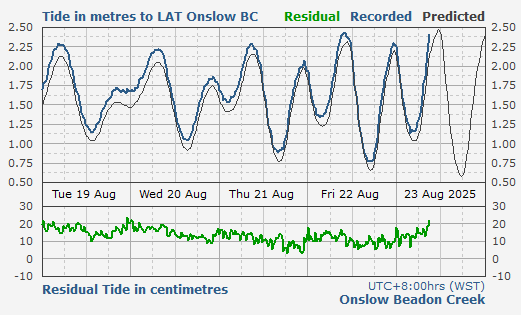
Exmouth tide levels now
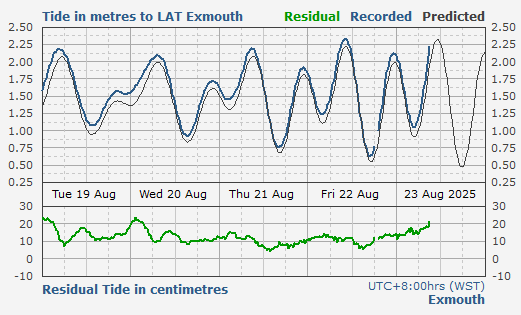
Carnarvon tide levels now
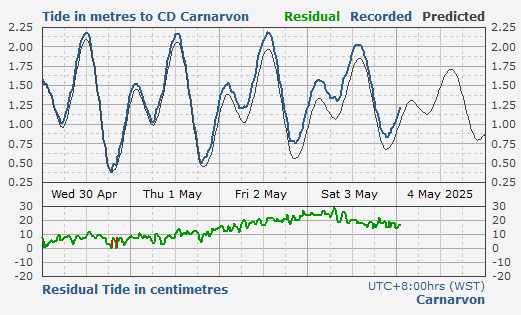
Geraldton tide levels now
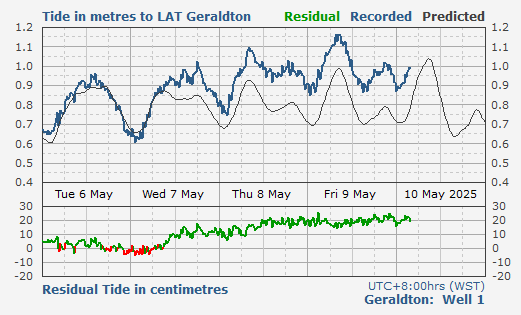
Jurien Bay tide levels now
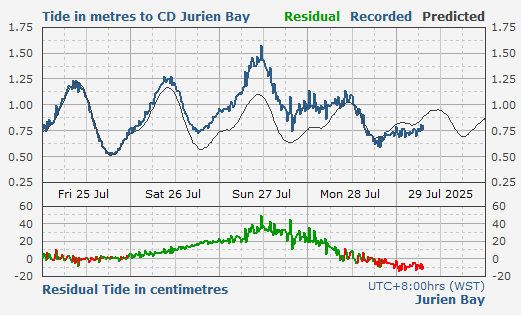
Two Rocks tide levels now
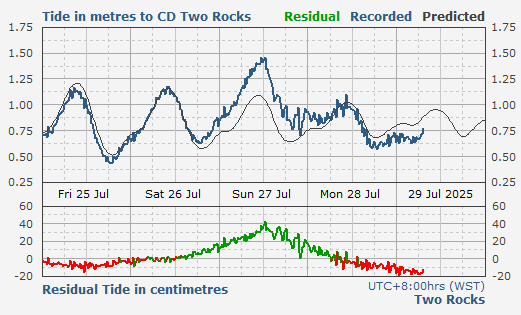
Perth (Barrack Street) tide levels now
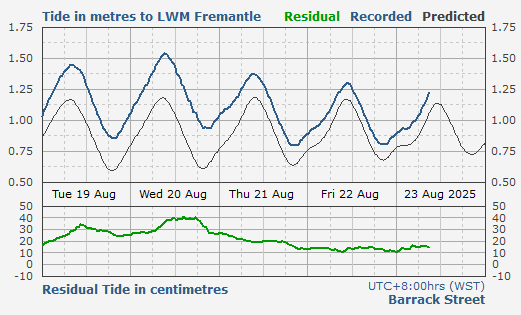
Fremantle tide levels now
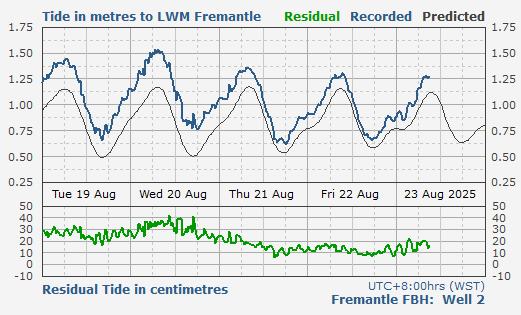
Cape Bouvard tide levels now
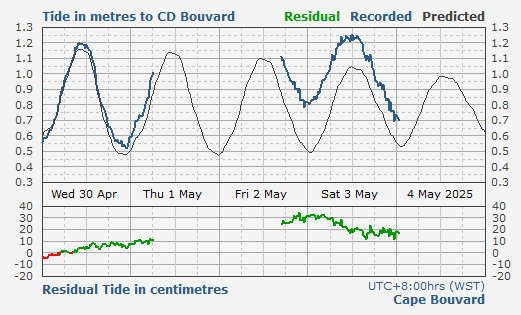
Bunbury tide levels now
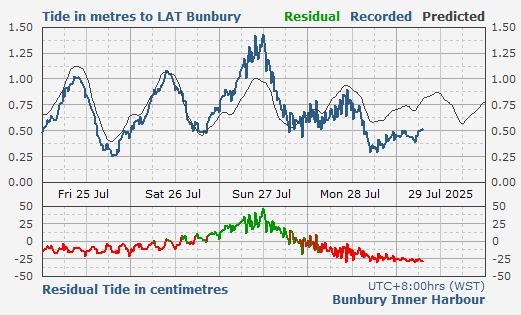
Brusselton tide levels now
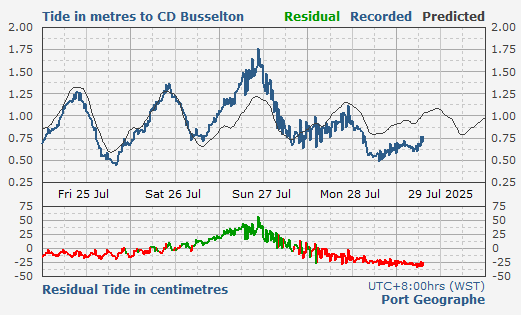
Albany tide levels now
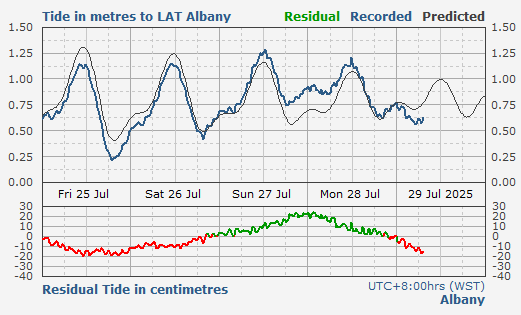
Bremer Bay tide levels now
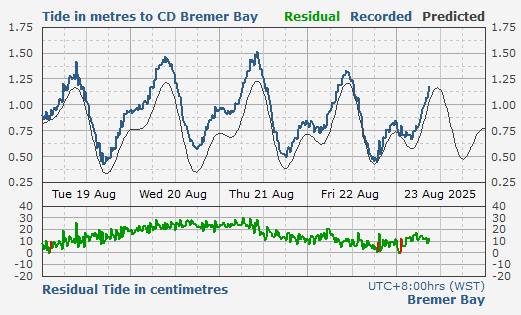

 Marine Science Australia
Marine Science Australia